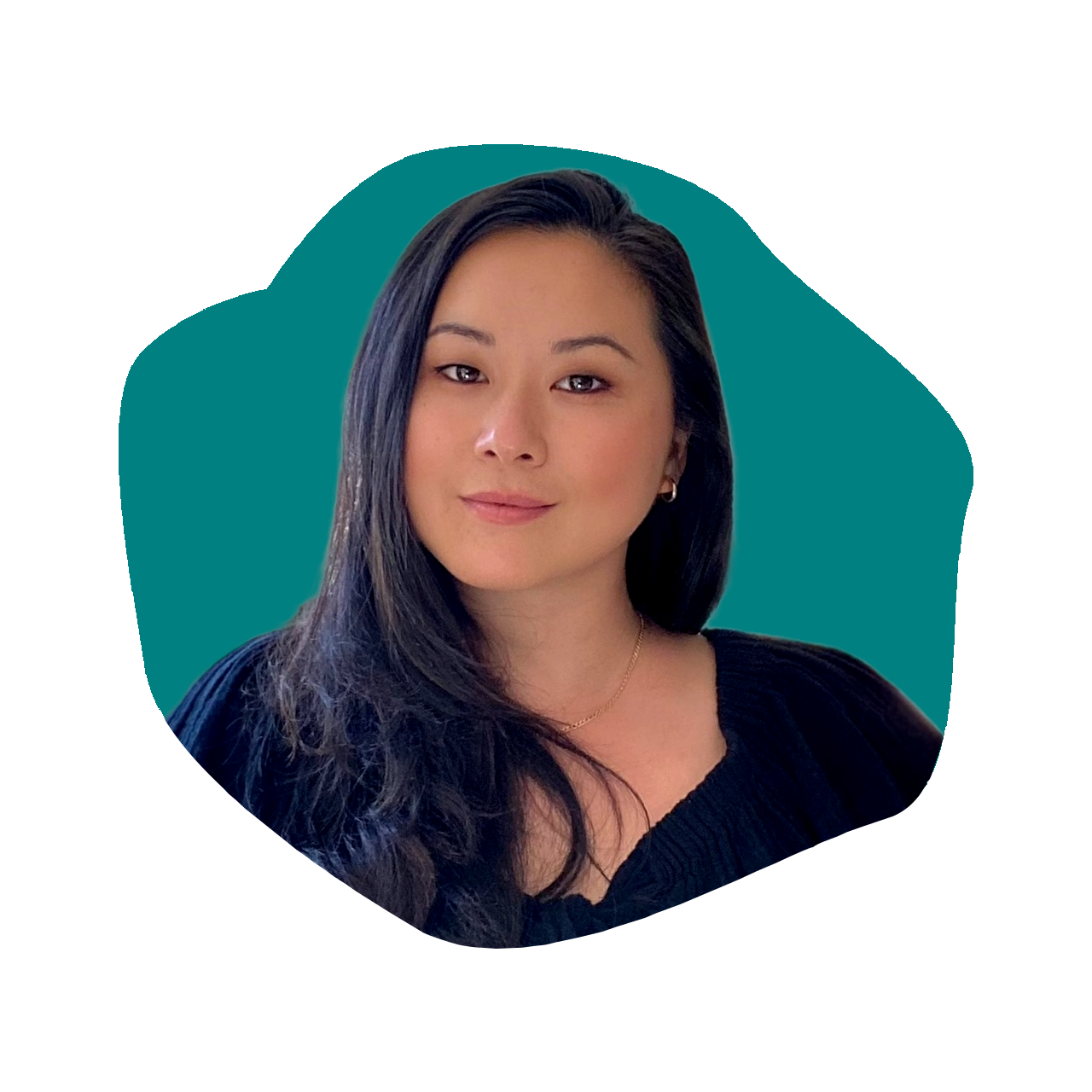Jing Gao: Founder of Fly By Jing
Episode 495

In this episode, Jing Gao, Founder of Fly By Jing, takes us on her journey founding the first premium Chinese food company that brings thoughtfully-crafted pantry staples to the modern kitchen while challenging misconceptions about Chinese cuisine. We learn about how closing her restaurant led to the idea of starting Fly by Jing, what it takes to launch a product then expand the product line including its popular and versatile Chili Crisp, collaborations and brand partnerships, overcoming obstacles and many of the lessons she has learned as a founder. including its popular and versatile Chili Crisp. So many lessons. So much inspiration. Listen now on this episode of #TheKaraGoldinShow.
Resources from
this episode:
Enjoying this episode of #TheKaraGoldinShow? Let Kara know by clicking on the links below and sending her a quick shout-out on social!
Follow Kara on LinkedIn – Instagram – X – Facebook – TikTok – YouTube – Threads
Have a question for Kara about one of our episodes? Reach out to Kara directly at [email protected]
To learn more about Jing Gao and Fly By Jing:
https://www.instagram.com/flybyjing/
https://www.instagram.com/jingtheory/
https://www.linkedin.com/in/jingtheory/
https://www.tiktok.com/@flybyjing
https://www.facebook.com/flybyjing/
https://flybyjing.com/shop/
Transcript
Kara Goldin 0:00
I am unwilling to give up that I will start over from scratch as many times as it takes to get where I want to be I want to be, you just want to make sure you will get knocked down. But just make sure you don’t get knocked down knocked out. So your only choice should be go focus on what you can control control control. Hi, everyone and welcome to the Kara Goldin show. Join me each week for inspiring conversations with some of the world’s greatest leaders. We’ll talk with founders, entrepreneurs, CEOs, and really some of the most interesting people of our time. Can’t wait to get started. Let’s go. Let’s go. Hi, everyone. And welcome back to the Kara Goldin show. I’m so excited to have my next guest. Here. We have Jing gow, who was the founder of an incredible brand that I just shared with her. My family is obsessed with it, including my college kids calling me saying I have to have that I’m so depressed that I don’t have it in my house right now. You have to get it for me. Of course, I said order yourself. You’re you have to figure this stuff out. No, but seriously, it’s the first premium Chinese food company that brings thoughtfully crafted pantry staples to the modern kitchen. And it’s called Fly by Jing. And it is so so great, launched in 2018 by founder Jing, and it is incredibly popular. And the sort of the core product that I had actually tasted early on, which got me really recognizing the brand was the chili crisp. Really, really great. But it’s definitely a brand that is changing. I guess the false. How do I say misconceptions of for some around what is Chinese food, we’re gonna get have Jing talk a little bit about that, and, and really why she’s so passionate about that, too. So let’s get started. Welcome, Jing.
Jing Gao 2:08
Thank you so much for having me. Totally. Thank
Kara Goldin 2:11
you so much for coming on. I really appreciate it. And like I said, I’m a big fan. So and I love that you’re doing this. So I loved reading a lot more about your backstory. And I, I have to ask you, just to cover a little bit of early ground with with you. So where did you grow up? And and kind of like, I know you’re living in Las Vegas, or just outside of Las Vegas now. But like, where did you grow up? And did that have anything to do with you starting your brand Fly By Jing? Yes.
Jing Gao 2:46
So the short answer is yes. We had everything to do with it. So I was born in Chengdu, which is the flavor capital of China. It’s the capital city of Sichuan province known for its amazing flavor profiles. I mean, China, just as a whole is known for incredible food. But, you know, there’s different regions within it. And Sichuan is one of the major ones. But so I was born there, but grew up moving around a lot, because my dad was a physics nuclear physicist, he was a professor, we moved with his job, basically, to a different country almost every year. So we lived in Germany and England, Austria, France, Italy, and then eventually Canada. So very nomadic childhood. And I think that definitely influenced how I saw myself, you know, I was often the only Asian kid in school, you know, kids couldn’t pronounce my name. And so at a very early age, I decided I was going to go by a Western name to try to fit in London. So I went by Jenny for most of my life. And eventually, you know, after graduating from college in Canada, I went to a business school that gave me the opportunity to do an exchange semester in China. So that was kind of a very pivotal moment, because as an adult, being in China, you know, I thought I would have like, nothing, you know, to connect with there anymore. Because I felt, you know, I was so Western. But in fact, you know, it was a really incredible experience. And I realized just how much richness and depth there was, to my heritage, and to, you know, this, this, this country was so many years of, of history, and, in particular, what really drew me was the food. So, Chinese culture and kind of digging into it, learning about it, tasting it, you know, it allowed me to connect not only with my family, who are back in China, but also was myself and a sense of identity that I think I’ve really pushed down for so many years. And that is kind of like the beginning of my food journey. You know, it was a very personal quest to reconnect with my roots. But the more I learned about it, the more I realized also how how much of a disconnect there was between what real Chinese food is and what the perceptions of Chinese food are internationally. And it became my mission to try to bridge that gap into try to shine new lights on Chinese food and, you know, give it the pedestal that I felt like that it deserved to be on.
Kara Goldin 5:26
So you started your career I read at it was a Procter and Gamble. Yeah,
Jing Gao 5:33
yeah. So I did the, you know, I graduated from business school where they told you you had only three choices. You had investment banking, consulting, or you know, I mean, that was really it was really just two choices. But as a, you know, to rebel against that I went into p&g brand management. So, yeah, that was my first job out of school, it was really amazing kind of training ground. I think, you know, p&g and especially their brand manager program is, is very thorough, very well thought through, they’ve got like a century’s plus worth of experience in building world class brands. And as a brand manager, you kind of act like a mini CEO within the brand. So the experience you guys just like incredible.
Kara Goldin 6:22
Yeah, such a great training program. For sure. It’s, that’s amazing. So then you ended up opening a restaurant, I understand. And Shanghai, I think there were some roles in between there intact, and you were trying to sort of figure out exactly what your passion was. But when you finally got to opening the restaurant in Shanghai, I feel like you were you were really answering that desire, that passion, the thing that you really, you know, would get up for in the morning. So can you talk a little bit about that experience?
Jing Gao 6:59
Yeah, for sure. So different corporate jobs kind of led me down this path to being in China. And I realized, you know, I, I liked the experiences that I had, and I often would gather a lot of different types of experiences. So after brand management, I did like Product Management at a tech company, and then and then a business development director at another tech company. And so I was gathering all these different experiences. But I also realized, I knew that I didn’t want to work for a corporate kind of entity for the rest of my career. And I kind of knew that I was sort of gathering different experiences in order to be an entrepreneur in order to gain the confidence to like, you know, branch out and do something of my own, even though I didn’t know what it was at the time. But like I said, food really drew me and kept drawing me back. And so it started out as me like logging and writing about Chinese food, doing a lot of different projects within food media, really, like, again, promoting Chinese food. And then I had the opportunity when I met my former business partner to create a concept. And so for me, I was seeing really inspired by the fast casual kind of restaurant model in the US that was becoming really popular, like Chipotle, and sweet green. And there was nothing like that in China at the time. Especially, you know, ones that were actually celebrating Chinese flavors, and not Western, you know, salads and stuff like that. So I wanted to combine that and then also, you know, just create food that was like super high quality and like, all natural without preservatives and additives, and stuff like that. So, so that was my first business that was them. And it was really intense. You know, going for I was like in my mid 20s. And trying to figure it out. I spoke Chinese, but it wasn’t super fluent. So having to navigate, you know, the entrepreneurship landscape, the restaurant, the hospitality world, construction design, hiring a team, you know, food supply chain, all of that. It was it was quite challenging. It took about two years before we were able to open, but it did pay off because, you know, open to a lot of a lot of fanfare, it was very unique, especially at the time in Shanghai, and we had a lot of early success.
Kara Goldin 9:34
That’s awesome. And how did you ended up shutting it down? Right, and what was the I mean, that must have been very difficult. And maybe, maybe you had some, you know, relief a little bit, but it was it was time but I know it’s as a founder, right. Whether you’re opening a restaurant or a product, it must be really hard. Um, to make that decision?
Jing Gao 10:02
Well, yeah, we had a really, you know, good run. But like you kind of hinted that there’s, as a first time founder, there’s a lot of lessons that you learn, especially around partnership, right. And so I learned a lot of tough lessons around, you know, who, who, who makes a good partner who doesn’t. And so, you know, I went into that partnership, not really being discerning, because it was my first time around, and I knew nothing about how to, you know, the dynamics of business partnership, right, it’s, it’s a really important decision. And ideally, you’re picking people who have skill sets, and, you know, similar worth work ethic, but skill sets that complement yours. And, you know, not just who can be financially, you know, backing the business, which you can find money pretty much anywhere. But what’s more important is the is the actual working relationship. And so I learned a lot of tough lessons with that, when I realized this is not the right partner. And so, you know, it was a very difficult decision to leave that partnership until, to eventually see see that project kind of shutter. But for me, I think I took away from that so much experience, because everything that we built, it was super hands on for me, every single piece of the business, I have touched from the concept to the recipes to the packaging, to the architecture, and like, you know, the supply chain everything right. And so I knew walking away that even though there was a loss there, there was a lot for me to take forward. And to learn from him to create something even bigger and better for my next project. So and it led me to my next project, which was Fly By Jing, which is what I’m working on now. So you know, no regrets there.
Kara Goldin 12:03
So Fly By Jing. So you leave Shanghai and you come to the US and you decide to to launch Fly By Jing, do you remember the moment when you said, I gotta just do this? I have to go and start this. It’s like, I got a great idea. And I’ve learned a lot of lessons. I know how to get traction. But what was the kind of the moment when you said, I’ve got to do this?
Jing Gao 12:29
Mm hmm. Yeah. So I think initially, I didn’t know what it was what slab edging even was, you know, I didn’t know what my next project was going to be. But I went back to my hometown, and I reached out to this incredible chef, who I just asked, like, Can I start with you with you? Can I study like Sichuan cooking with you? Because I think I was just like really seeking or searching for something that was true to who I was that I could express. And, you know, I knew that whatever I wanted to express would be rooted in tradition, but also modern, and also a reflection of who I was, right? Like, I am the only person that I knew who was born in Toronto, but lived in like eight countries growing up and like, you know, is Canadian, but now living in Shanghai. And so it was very, like, okay, so how do I make this make sense for me. So I studied with him. And it was an incredible experience learning so much about the traditions, the ingredients, that was like really eye opening and key for me, because I realized through this shop who really is cooking at like a Michelin star level, there was this world of incredible artisanal Chinese food ingredients that normal people just don’t even have access to, or like, don’t even know about, right, and you only really experienced that when you are dining at those types of fine dining restaurants in China. And it’s typically not what Chinese food is known for, you know, you think of Japanese food and you’re like, oh, wow, like, you know, there’s so much richness and quality and artisan ship to the ingredients. But when you think about Chinese food, you often think low quality, you know, filled with preservatives, cheap, this, that and the other and so I was it was really eye opening for me to see that there was so much to be proud of and so much to celebrate. And so I took what I learned and, you know, kind of placed my own twist on it and started to just experiment with cooking. And that led me to opening a sort of underground supper club. They call them private kitchens in in China. And so, by invite only or, you know, sometimes I would do pop up I would do these dinners and, and events where I was expressing sort of my own voice Through Citron flavors, and I named it Fly By Jing partially because, you know, in tribute to my birth name, which at the time I was still Jenny. But the fly was a reference to a type of restaurant called Fly restaurants in Chengdu. And these are a hole in the walls that are so delicious, they attract people like flies. And I wanted to really evoke that energy, those flavors in my cooking. And so Fly By Jing was born as like, kind of a roving supper club. And it was through that process of like cooking for literally 1000s of people were an all over the world, not just in China, you know, travel and take it on the road to the US to Australia, New Zealand, Japan. And the reactions of people when they would taste the food was really what showed me that, you know, there’s, there’s this gap to be filled, that there is this real enjoyment that people had of the flavors, but they just had no access to the flavors and the ingredients. Because like I said, it’s even hard to find those ingredients in China, let alone outside of China, where there are these misconceptions, and where there is no demand for high quality Chinese products, because people have traditionally only asked for cheap products, you know, because that’s the expectation. So nothing of quality would ever be exported, if Chinese manufacturers are being told, No one’s willing to pay more than $1 or two for your products, right. So of course, they’re not going to put quality stuff into it. So that was kind of like the impetus. And in 2018, I traveled to the US and I looked on the store shelves, I went to a you know, Expo West, the biggest trade show. And I saw nothing, I saw no representation of high quality, Chinese flavors. And so that was really the moment that I decided I needed to do something and you know that my cooking, the best way that I could like reach even more people with my flavors was to turn those flavors into condiments and sauces that were versatile. And you could apply on anything.
Kara Goldin 17:16
I love it. So what was the first product that you actually launched with?
Jing Gao 17:20
So the first product was the Sichuan chili crisp. So the one that you tried first, it is our hero product. And it was actually a base sauce for a lot of my dishes. And I realized that, you know, this is like a flavor base. But it was also shelf stable. So I could like put it in a jar, and I was selling it locally in Shanghai already. But in 2018, after seeing the state of Expo West, I launched a Kickstarter for basically that product. I told my story, I filmed a video with my friends, we went to Tom do for five days and like film, this video talking about my mission. And like what I wanted to do just like change the narrative about Chinese food, and do it through this incredible condiment, which is, you know, chili oil. And it’s a extremely popular hot sauce and condiment in China, but really non existent at the time in the US. And from that Kickstarter, I was able to raise enough money to create my first big batch at scale. It was, it was actually, you know, a bunch of press picked up on it. So it turned out, you know, to go viral and ended up being one of the highest funded craft food projects on the platform. And it was enough kind of proof of concept or indicative of of enough demand that I decided I was going to move to the US. So that winter, I packed up my bags and moved to Los Angeles. And I set up the company from there.
Kara Goldin 18:55
That’s amazing. So what are some of the insights that you have into like the creative process of, of developing, like, how many SKUs Do you guys have today? How did you think about launching more skews? Obviously, the session? Chili’s crisp was the it was it? It gave you confidence, right that people loved it. It was doing well. But when do you go and launch other products follow on products from there?
Jing Gao 19:28
Yeah, so because of the initial success of the Kickstarter for social chili, Chris, I actually like to try to keep the momentum going. I was offering these like, stretch goals on Kickstarter. So like, if we hit like 50k Then I will introduce another sauce. And so what I didn’t expect is that we ended up hitting all the stretch goals and all of a sudden I had to produce three sauces. So it was potentially because John stuff and MOSFETs was my first three and now actually became our first you know, set of products that we launched with. And we call it the triple threat. We, you know, I felt like it was three different very, very different sauces. One was like, you know, this savory, spicy crispy chili oil. One was a sweet and spicy chili oil. And then the last one was like a spice mix, it was kind of like a blend. And then, you know, from there over the last four years that we’ve been around, we’ve also introduced more products, kind of like some hot sauces and like chili sauces, we’ve got like a Chili Chili Chris vinaigrette, which is an extension of the the the chili Chris, which is you know, our bestseller. We’ve also got a hot oil that we were actually on the show hot ones with, which is more of like a hot sauce, you know, pure hot sauce, very spicy. We most recently have launched a sauce that I’m personally extremely excited about called chundu Crunch, which is a ultra crunchy version of chili oil. It’s got all these just like beans and fava beans and protein kind of packed feeds and stuff in it. And it’s just delicious. But, you know, in between, we also have launched a lot of like, non sauce items, too. There was a year where we did frozen dumplings. And the way that I really looked at that was you know, people have to eat the sauce on something right and like to make it even easier for them to enjoy the sauce by introducing frozen dumplings. Now, the frozen dumplings were really successful, but we decided to sunset them after a year because ultimately, I realized that we were starting to like run two different companies right economy inside, and you got frozen, very different supply chain logistics, and margin profiles. So it didn’t make sense for us to do both as one team. And ultimately, I learned a lot about the importance of focus. And, you know, narrowing down what you’re doing, you know, and not spreading ourselves too, too thin. So staying within the same category, basically, as much as you can. And so. But another area, we’ve found success in terms of product development is like partnerships. So we’ve done a lot of collabs. So you might have seen our fish wife club, they were actually just on Shark Tank, and our product was on there. It’s a chili, Chris smoked salmon, which has been extremely popular. It’s a delicious product. We’ve also done collabs with like Daring plant based chicken with some noodle ramen with little sesame hummus. And so now we’re starting to show up in different aisles of the grocery store. Not just in the condiment aisle, but with our branding, but not with like, but but like not our company having to do the actual production, which has been a really great, a great strategy for us. I
Kara Goldin 23:23
love that because these collaborations are still getting your brand out there. Right. And that’s that is really powerful. And you’re not paying for that. So it’s it’s kind of the Intel Inside from, you know, way long ago theory of of working together on these different collaborations. I really liked that a lot. So what are some of the biggest obstacles? I would say like trying to figure out? Do you want to be in multiple businesses? That’s probably a big obstacle. But has there been anything else along the way, maybe a packaging change or, you know, scaling in some way where you’ve just felt like, gosh, this is harder than I ever thought and or why did I make that mistake along the way? We’ve heard so many, you know, amazing ones along the way. We’ve heard from kombucha brands that were their products like literally exploded because they they were trying to do things that you can’t do under under pressure. And anyway, I’m just curious if that sort of brings up anything for you as you’ve been building this brand that has been, you know, another lesson in how many lessons do we have to learn as founders, as I always say, you know, it’s like there’s so many but is there anything that has come up?
Jing Gao 24:47
I think just endless Right? Like it’s it’s an endless journey of challenges and it never ends. But you know, in the early days for sure, you know, they those checks I’m just looking a little different from what they are now. Um, we yeah, we talked about like explosions of product. Like, we’ve had lots of, you know, mishaps in manufacturing. But I would say probably, the one that sticks out the most is like, you know, shortly after we launched, it was, you know, we officially launched in around February of 2019. And a year later, it was COVID. And at that point, you know, we produce everything in my hometown in China, right. So the production was, was ground to a halt, there was a lot of questions on whether US China, trade relations would be in danger, I had no idea what the future of this business was going to be. And also was, like, a lot of, you know, discrimination against Asian people here in the US had no idea what my future in this country will be. And, you know, you started to see this crescendo of, you know, trolls and Criticism Online for our products, right, people saying like, Oh, like, I’m not gonna buy anything from China, or, you know, Chinese food is, is supposed to be cheap. How dare you charge $15 for like, a Chinese hot sauce. That’s like, ridiculous. You know, really, yeah, all these really uninformed, prejudiced, like, kind of sentiment started to come up. And, and it’s not like it didn’t always exist, but it was just very, very loud. And, you know, that was a scary time, what ultimately ended up happening was, we ended up doing better than ever, during COVID, because of people cooking at home, people wanting new, exciting, easy flavors to add to their home cooking, right, bringing restaurant favors home. And the truth of the matter is, you know, Chinese food has been a fabric is a part of the fabric of like American dining for forever, you know, there’s more Chinese restaurants in America than all the fast food chain combined. There’s more than 50,000 Chinese food, Chinese food restaurants in America. And but, you know, there is this misconception of around Chinese food that we, you know, we face and that is a challenge. And, and that’s this basic, just like misunderstanding of, of what it is, right? And the perception that it’s, you know, it’s it’s not worth paying for. And that really comes from this idea. Well, this concept called like the hierarchy of tastes, which was coined by a sociologist and NYU, and it’s all about how we place value on a cuisine based upon the value that we place on the socio economic status of immigrants from those countries. Right. And so, but that’s dynamic, right? 100 years ago, Italian food was also looked down upon, but now you can go to a restaurant pay $50 for quick. So interest rate. And so these are, these are things that evolved, and I knew that five aging and myself and other entrepreneurs, like myself would be part of that evolution, push that forward. And so, you know, and I noticed that a lot of the criticism against her brand was people who had a very narrow set of experiences when it came to Chinese food, but a very strong opinion. They’d be like, well, this is not what I experienced, when I, you know, have eaten at Chinese restaurants, or when I’ve been to China once or, you know, anything like that. And, and, you know, my question back to them would be, why, you know, like, Why do you think Chinese food has to be a certain way or has to fit into your very narrow set of experiences? Right. And there’s, you know, I think, I think so that really inspired me to rethink what is on our jar, and like kind of what our brand stands for, prior to that point. And if you look at like the old Kickstarter pages, the branding was very different from what it is today. It was just a really attractive, bright, flashy kind of neon label in the beginning, and it was really just, you know, I designed it because I wanted to have people do a double take when they saw the product and to, you know, ask themselves why they expect the Chinese food to look differently, right, like no one expected a dark chili sauce to look the way that it did. People said it looked more like a high end beauty products. But aside from that, it didn’t really tell our story, you know? And so I started to work on a rebrand that really, you know, I felt addressed a lot of like what we were about, and also addressed a lot of like the misconceptions that we were facing all the time. And there was so much richness to that story that the brand really felt like it should be like a maximalist kind of experience. And that was a deviation from brands at the time that were really minimal, very, like pastel in color. And like, you know, we kind of went the opposite direction, more towards like a Dr. Bronner, or like an ollie. But so what you see on the jar today, you really can read our entire story, it says, food by Jane, who used to go by Jenny, and who uses her experience as a trained chef to share, you know, flavors with, with the world and our tagline, not traditional or personal, again, referring to the fact that this is not a product that fits into your, your very narrow box of what Chinese food is, right? It’s a very personal expression. And there’s room for that, you know, and there’s room for many more, just like us, as well. So kind of taking you out of this, like very black and white and very kind of, you know, this, this view of Chinese food that was lacking in nuance and introducing a lot more, a lot more nuance. And so once we launched that brand, that rebrand, I think, people just got it, you know, and I think that sort of was like the beginning of a new era for five aging. And it just so happened that during COVID, around the same time with the rebrand, and this was not planned, I finally found the strength to regain to reclaim my birth name as well. So I became Jane from Jenny.
Kara Goldin 32:03
I love that. So what a what a great story and incredible product. So Jing, thank you so much for coming on. And sharing your wisdom and Fly By Jing is incredible. Congratulations, you should be so proud. And everything that you’re doing is is amazing. I should say that the chili crisp, I saw a note about it that it’s great on ice cream. And I tried it last night. And it actually really is amazing on ice cream too. So there’s so many different opportunities. And obviously you’re doing great partnerships too. But we are going to be watching out for you. And hopefully, everybody will go out and get some Fly By Jing go online as well. They’re in lots of stores, too, but really, really great. So thanks again, Jane, really appreciate you being here with us today.
Jing Gao 32:58
Thank you so much for having me. I really enjoyed myself. Take care.
Kara Goldin 33:04
Thanks again for listening to the Kara Goldin show. If you would, please give us a review and feel free to share this podcast with others who would benefit and of course, feel free to subscribe so you don’t miss a single episode of our podcast. Just a reminder that I can be found on all platforms at Kara Goldin. I would love to hear from you too, so feel free to DM me. And if you want to hear more about my journey, I hope you will have a listen or pick up a copy of my Wall Street Journal, best selling book undaunted, where I share more about my journey including founding and building hint. We are here every Monday, Wednesday and Friday. Thanks for listening and goodbye for now.
People Also Liked

752
Mark Rampolla: Author of An Entrepreneur’s Guide to Freedom and Founder of ZICO

751
Deborah Pagani: Founder of Deborah Pagani Beauty

750
Angela Caglia: Founder & CEO of Angela Caglia Skincare

749
Doss Cunningham: Chairman & CEO of Nutrabolt

748
Cheree Ashley: Founder & CEO of Osier




